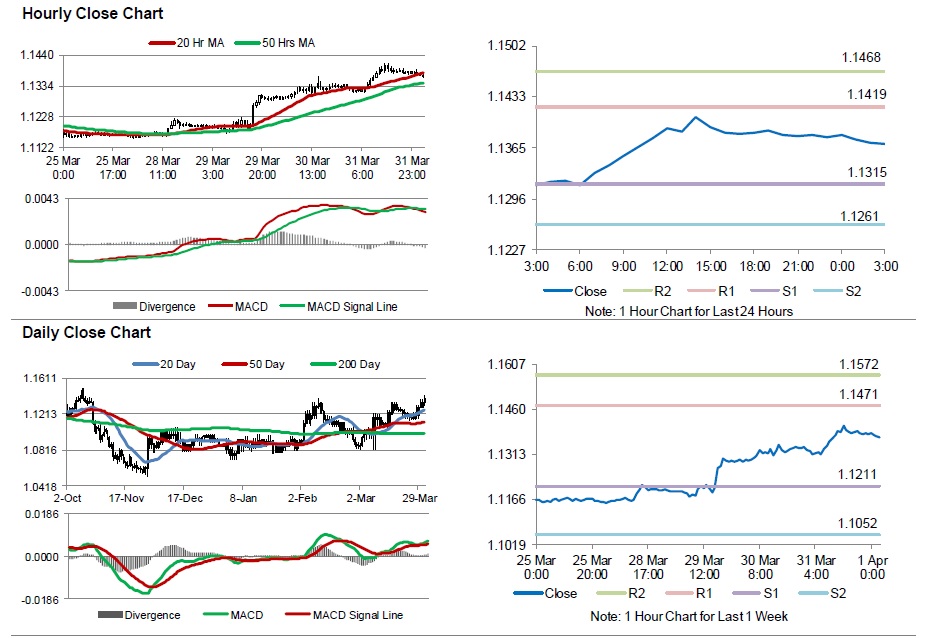For the 24 hours to 23:00 GMT, the EUR rose 0.40% against the USD and closed at 1.1379.
In economic news, the Eurozone’s preliminary consumer price index declined in line with market expectations by 0.1% YoY in March, compared to a 0.2% fall in the previous month. Elsewhere, in Germany, the seasonally adjusted unemployment rate remained steady at a historic low level of 6.2% in March. On the other hand, the nation’s retail sales surprisingly fell by 0.4% MoM in February, in a big setback to the Euro-zone’s top economy. It followed a revised drop of 0.1% in the previous month. Market anticipation was for retail sales to advance 0.4%.
In the US, initial jobless claims unexpectedly rose to a two-month high level of 276.0K in the week ended 26 March 2016, compared to a level of 265.0K in the prior week. Markets were anticipating initial jobless claims to remain steady. In contrast, the nation’s Chicago Fed purchasing managers index advanced to a level of 53.6 in March, compared to a level of 47.6 in the prior month. Market expectation was for the index to register a reading of 50.5.
In the Asian session, at GMT0300, the pair is trading at 1.137, with the EUR trading 0.07% lower from yesterday’s close.
The pair is expected to find support at 1.1315, and a fall through could take it to the next support level of 1.1261. The pair is expected to find its first resistance at 1.1419, and a rise through could take it to the next resistance level of 1.1468.
Going ahead, investors will look forward to the release of Markit manufacturing PMI data for March, across the Euro-zone, along with the region’s unemployment rate data for February. Additionally, the US non-farm payrolls, unemployment rate, Markit manufacturing PMI and ISM manufacturing PMI data, due later today will also garner a significant amount of market attention.
The currency pair is showing convergence with its 20 Hr moving average and is trading above its 50 Hr moving average.

